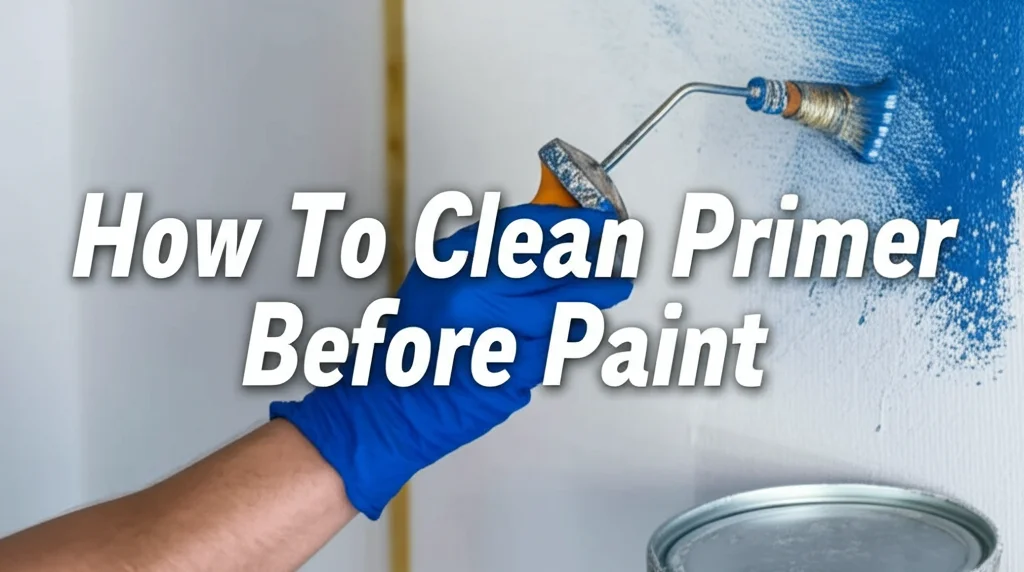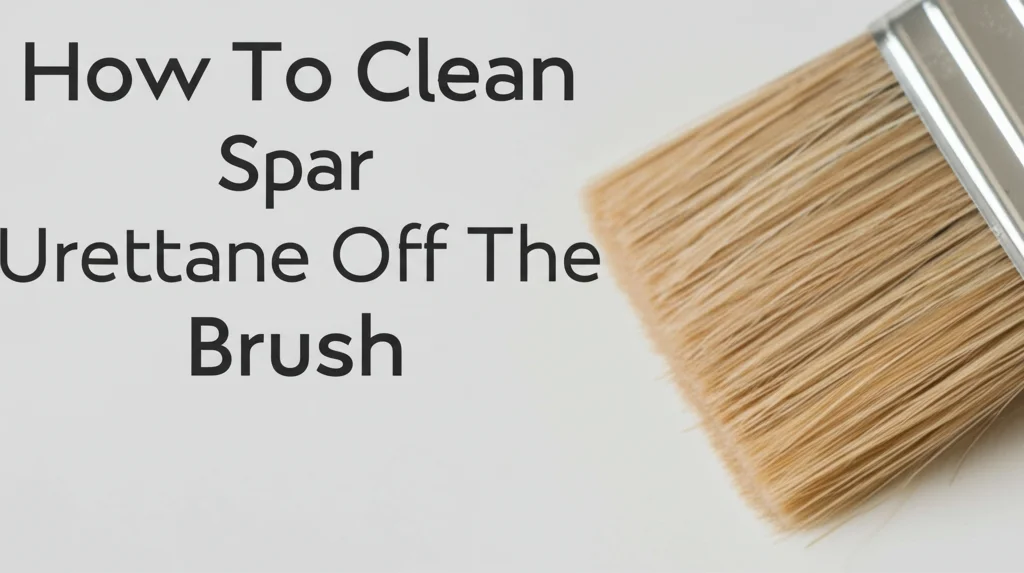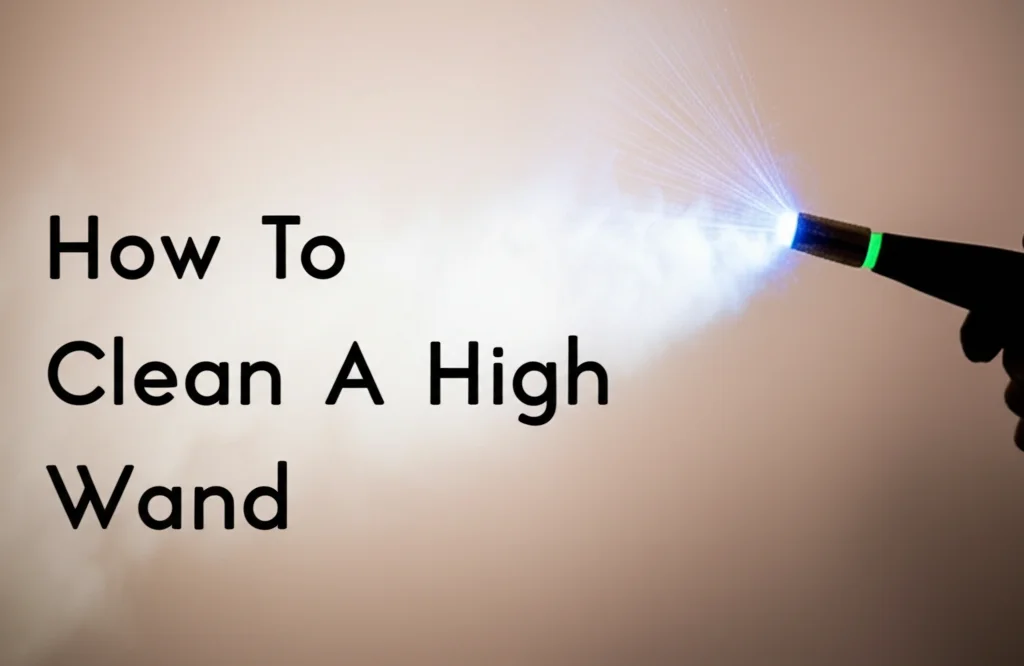· Painting & Home Improvement · 6 min read
How To Clean Primer Before Paint

Why Cleaning Primer Matters for a Perfect Paint Job
Have you ever spent hours painting, only to find imperfections showing through the final coat? Often, the culprit isn’t the paint itself, but inadequate primer preparation. Cleaning primer before painting is a crucial step many homeowners overlook, but it directly impacts the adhesion, smoothness, and overall appearance of your paint job. This article will guide you through the process of cleaning primer, ensuring a professional-looking finish. We’ll cover everything from removing dust to addressing minor imperfections, so you can achieve the results you desire. Properly cleaning primer ensures the paint bonds correctly, creating a durable and beautiful surface.
Takeaway:
- Remove dust and debris with a tack cloth.
- Address imperfections like drips or runs with fine-grit sandpaper.
- Vacuum surfaces before wiping to avoid spreading dust.
- Ensure the primer is fully dry before cleaning.
What is the best way to clean primer before painting?
The best way to clean primer before painting involves removing dust, debris, and any imperfections. Start by vacuuming the surface, then gently wipe with a tack cloth. For drips or runs, lightly sand with fine-grit sandpaper (220-grit or higher) before wiping again.
Understanding Why Primer Needs Cleaning
Primer isn’t just a base coat; it’s a surface preparation layer. It creates a uniform surface for paint to adhere to, blocks stains, and improves paint durability. However, during the priming process and while it dries, primer can attract dust, dirt, and even small particles from the air. Leaving these contaminants on the primed surface will create bumps and unevenness in your final paint coat. Think of it like building a house – you wouldn’t build on an unstable foundation, and you shouldn’t paint over a dirty primer layer. A clean primer surface is essential for a smooth, professional finish.
Tools You’ll Need to Clean Primer Effectively
Before you begin, gather the right tools. Having everything on hand will make the cleaning process much smoother and more efficient. Here’s a checklist of what you’ll need:
- Vacuum with a brush attachment: For removing loose dust and debris.
- Tack Cloth: These slightly sticky cloths are excellent for picking up fine dust particles.
- Fine-Grit Sandpaper (220-grit or higher): For smoothing out drips, runs, or imperfections.
- Sanding Block (Optional): Provides a flat surface for sanding, ensuring even pressure.
- Soft Cloths: For wiping away sanding dust.
- Mild Cleaning Solution (Optional): For stubborn marks or residue (test in an inconspicuous area first!).
- Painter’s Tape: To protect areas you don’t want to clean or sand.
Removing Dust and Debris: The First Step
The most common issue with primed surfaces is dust accumulation. Dust particles are lightweight and easily settle on the sticky primer. Start by vacuuming the entire surface with a brush attachment. This will remove the bulk of the loose debris. Be gentle to avoid damaging the primer. After vacuuming, use a tack cloth. Gently wipe the surface, applying light pressure. The tack cloth will lift any remaining dust particles, leaving a clean, smooth surface. Don’t reuse a tack cloth once it’s heavily soiled; switch to a fresh one.
Addressing Imperfections: Drips, Runs, and Bumps
Sometimes, primer application isn’t perfect. You might encounter drips, runs, or small bumps in the primed surface. Don’t worry; these are easily fixable! Allow the primer to dry completely before attempting to address these imperfections. Once dry, lightly sand the affected areas with fine-grit sandpaper (220-grit or higher). Use a sanding block for even pressure. Sand in a circular motion to blend the imperfections with the surrounding surface. After sanding, wipe away the dust with a clean, soft cloth. If you’re dealing with a larger area, consider using a dust mask to protect yourself.
Dealing with Stubborn Marks or Residue on Primer
Occasionally, you might find stubborn marks or residue on the primed surface. This could be from handling the surface, accidental spills, or even residue from the priming process itself. Before using any cleaning solution, always test it in an inconspicuous area to ensure it doesn’t damage the primer. If the test is successful, dampen a soft cloth with a mild cleaning solution (like dish soap diluted in water). Gently wipe the affected area, avoiding excessive pressure. Rinse the area with a clean, damp cloth to remove any soap residue. Allow the surface to dry completely before proceeding with painting. You can find more information on cleaning solutions for various surfaces at https://www.beacleaner.com/what-is-the-best-cleaning-solution-for-ceramic-tile-floors/.
Cleaning Primer on Different Surfaces: A Quick Guide
The cleaning process can vary slightly depending on the surface you’re priming. Here’s a quick guide:
- Wood: Vacuum, tack cloth, and light sanding are usually sufficient.
- Drywall: Be extra gentle with sanding to avoid damaging the paper surface.
- Metal: Use a mild degreaser if there’s any oil or grease residue.
- Plastic: Test any cleaning solution on an inconspicuous area first, as some plastics can be sensitive.
- Previously Painted Surfaces: Focus on removing loose paint chips and dust. If the old paint is peeling, address that before cleaning the primer.
Preventing Contamination During the Painting Process
Cleaning primer is important, but preventing contamination in the first place is even better. Keep the painting area as clean as possible during the priming and painting process. Close windows and doors to minimize dust entry. Use drop cloths to protect floors and furniture. Avoid touching the primed surface unnecessarily. Consider using an air purifier to remove airborne dust particles. Taking these preventative measures will reduce the amount of cleaning required and ensure a smoother, more professional finish. If you’re concerned about dust and debris affecting your floors, you might find this article helpful: https://www.beacleaner.com/how-to-clean-hardwood-floors-with-vinegar/.
FAQ: Common Questions About Cleaning Primer
Q: How long should primer dry before cleaning?
A: Primer should be completely dry to the touch before cleaning. Check the manufacturer’s instructions for specific drying times, but generally, allow at least 24 hours.
Q: Can I use water to clean primer?
A: Water can be used for very light cleaning, but avoid excessive moisture. Always test in an inconspicuous area first. A tack cloth is generally more effective for removing dust.
Q: What if I can’t get a stain to cover with primer?
A: You may need to apply a second coat of primer, or use a stain-blocking primer specifically designed for that type of stain.
Q: Is it necessary to sand primer if it looks smooth?
A: Lightly sanding primer, even if it looks smooth, helps create a better surface for paint adhesion. It removes any microscopic imperfections.
Q: What’s the difference between a tack cloth and a microfiber cloth?
A: A tack cloth is specifically designed to pick up dust with a slightly sticky texture, while a microfiber cloth is for general cleaning and wiping.
Conclusion: A Clean Primer is a Key to a Lasting Paint Job
Cleaning primer before painting is a small step that yields significant results. By taking the time to remove dust, address imperfections, and prepare the surface properly, you’ll ensure a smooth, durable, and beautiful paint finish. Remember to vacuum, use a tack cloth, and lightly sand any imperfections. Don’t skip this crucial step – your paint job will thank you! Investing a little effort in primer preparation will save you time and frustration in the long run. Now that you know how to clean primer effectively, you’re well on your way to achieving a professional-looking paint job. For more helpful painting and cleaning tips, explore our other articles at https://www.beacleaner.com.




